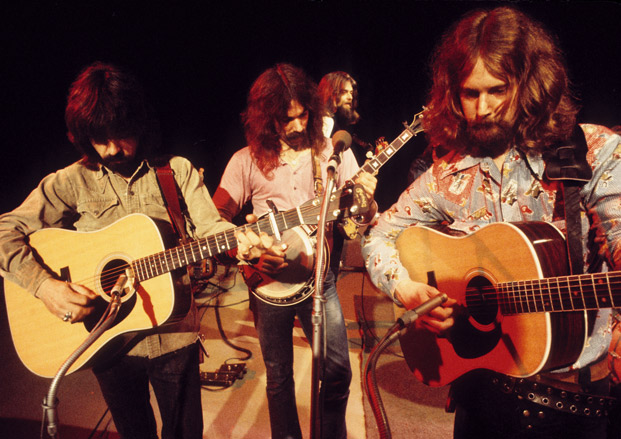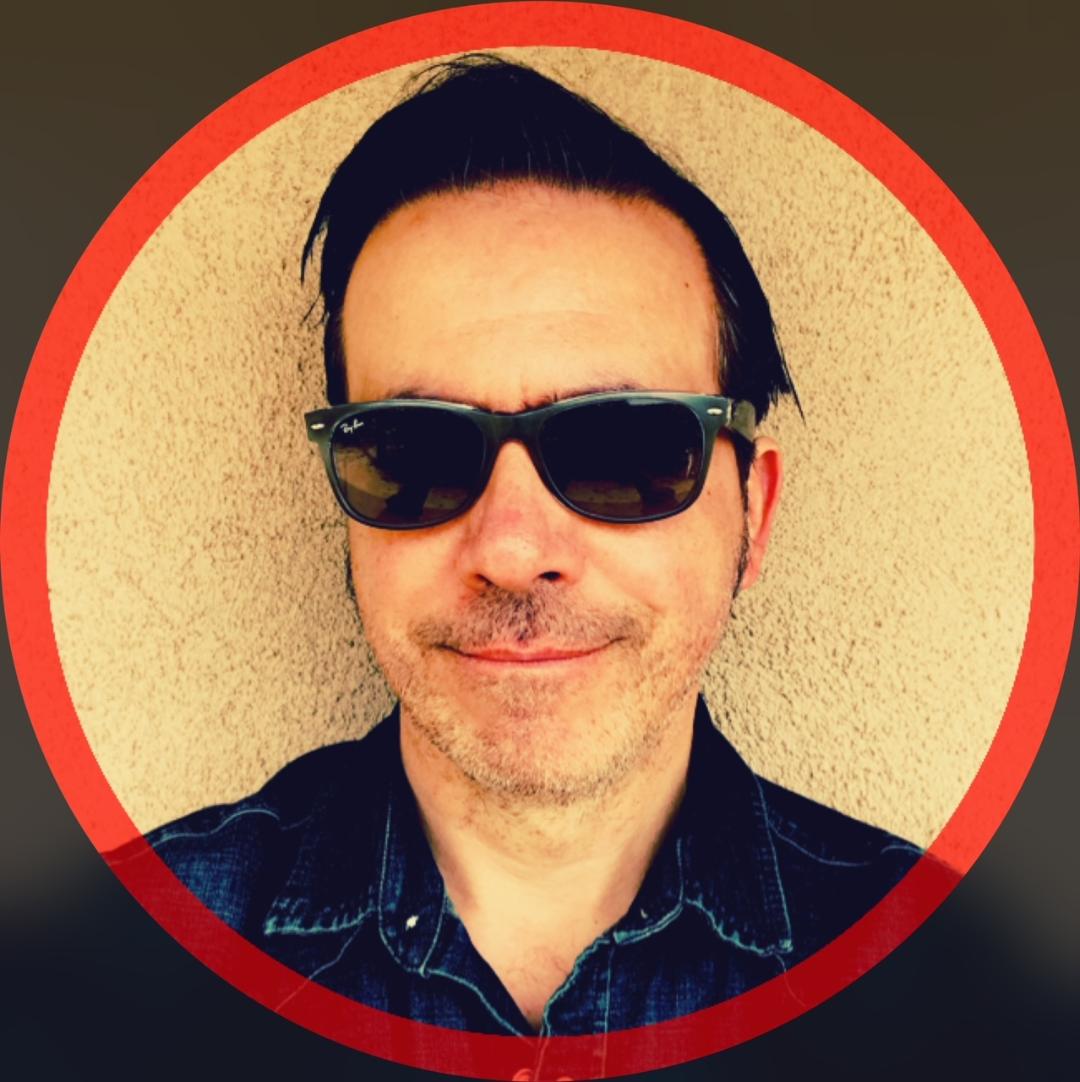A Salute to Clarence White of The Byrds and Kentucky Colonels
As an electric guitarist, Clarence White built the bridge between country and rock in the late Sixties.

Clarence White was a genuine double threat. His brilliant, Doc Watson-inspired acoustic flatpicking, which incorporated lightning-fast fiddle lines played on a vintage Martin D-28, helped the bluegrass world recognize the guitar as a lead instrument. Several masters of the genre, including Tony Rice and Norman Blake, cite him as a key influence.
As an electric guitarist, White built the bridge between country and rock in the late Sixties. His work with the Parsons/White StringBender—an ingenious B-string-pulling device invented and installed in White's 1954 Fender Telecaster (or former Esquire; the jury is still out) by fellow Byrd, multi-instrumentalist and machinist Gene Parsons—is legendary. Whether employing a crisp, bell-like, out-of-phase tone (the Byrds' "Tulsa County") or a touch of fuzz (the Flying Burrito Brothers' "The Train Song"), White inserted his dancing, whimsical runs into songs with confidence, knowing that a little can often go a long way.
White, a member of the Byrds, Nashville West, Muleskinner and the Kentucky Colonels (and the New Kentucky Colonels), also was an in-demand session player who recorded with Arlo Guthrie, Wynn Stewart, Wayne Moore, Gary Paxton, the Monkees, Joe Cocker and Jackson Browne, to name just a few. He was killed by a drunk driver after a gig in California on July 14, 1973, never getting to fully grasp the influence he'd have on bluegrass, country and rock. He was only 29 when he died.
There really aren't that many "Clarence White in action" videos to be found on YouTube, but I hope I've collected a decent sampling of clips that represent his skills. Before we get started, if you want to know more about White—before, during and after the Byrds—check out this well-researched and well-compiled site, burritobrother.com.
Also, be sure to check out the top video, which stars Marty Stuart, who bought White's Tele from his widow around 1980. As Guitar World's Damian Fanelli puts it, it's as if she donated a part of White—just as a grieving family would donate a heart or another precious organ—to someone who could make the best possible use of it. As a result, Clarence White's "heart" still beats loud and clear today.
Stuart explains how he came to own the guitar, and he shows off (and explains) every little detail of the space-age axe. Nice job by the Reverb.com video crew!
- Here are some clips—audio and video—of White in action.
"You Ain't Going Nowhere," the Byrds
All the latest guitar news, interviews, lessons, reviews, deals and more, direct to your inbox!
Because the Byrds' Sweetheart of the Rodeo version of this Bob Dylan tune highlights pedal steel guitar (courtesy of Lloyd Green), we suggest you check out a slightly later live rendition instead, like this one from a 1968 TV appearance. It puts the emphasis on White, his still-Nudie-sticker-free Fender Telecaster and his Parsons/White StringBender.
"I Am a Pilgrim" / "Soldier's Joy," Clarence White, Roland White and Bob Baxter
Here's White (on the left, with the beard) on the Bob Baxter Guitar Workshop, an LA-area TV show from 1973, performing a—what I consider—mind-blowing medley of "I Am a Pilgrim" and "Soldier's Joy" with his brother, Roland, on mandolin and the show's host, Bob Baxter, on second guitar (later joined by Byron Berline on fiddle and Alan Munde on banjo). What I can say about this video?
First of all, it's rare in that it shows White's fingering and fretwork up close. Second, there's White unusual sense of timing in the first tune ("I Am a Pilgrim"); it's as if he's throwing in chord substitutions like a jazzer, while Roland plays it straight on mandolin. It can be disconcerting and confusing, but I love it. To hear White playing more bluegrass, check out the Flatpick album on Amazon.com.
"Nashville West," Nashville West
No Clarence White playlist would be complete without what some would consider his signature song. Although White recorded the official studio version with the Byrds (plus an earlier studio version under his own name), here's a stripped-down 1968 (several sources say 1967) El Monte, California, club-date version by another of White's bands, Nashville West, which featured Gene Parsons on drums.
"Buckaroo," the Byrds
Feel free to argue, but if you had to choose one Byrds album that best demonstrates White's electric-guitar prowess, it'd be Live at the Fillmore—February 1969. The musicians on the album are McGuinn on his 12-string Rickenbacker 360, Gene Parsons on drums, John York on bass and White on his B-Bender Tele. He never puts it down, so there's no escaping it.
The most impressive guitar track on the album is the band's cover of Buck Owens' killer-catchy instrumental, "Buckaroo." White rips open his bag of B-bender licks—and never closes it. Even his mistakes sound good, like the random open G string he hits at :32. Play this one good and loud, people.
"Dark Hollow," Muleskinner
Did I mention White could sing? He was actually a fine vocalist with a distinctive, deep voice that was just right for bluegrass and the spaced-out-Americana material the Byrds were recording from 1969 to 1972. Here's another live appearance by White, this time with Muleskinner, one of his few post-Byrds bands, in 1973, the year he died. There are a few songs in this clip; "Dark Hollow," which features White on vocals, starts at 1:57.
"Sing Me Back Home," the Byrds
If you read the "Buckaroo" entry above, you already know about Live at the Fillmore—February 1969, which gets my vote as White's go-to "guitar album" (in terms of his electric-guitar playing). It even made Guitar World's list of the 30 best shred-guitar albums of all time.
Although I don't think of White as a "shredder" (except when he played bluegrass), he certainly works his way toward "shred country" on the Fillmore version of this Merle Haggard tune, which also was a favorite of former Byrd Gram Parsons. It's another B-bender masterpiece that shows off White's bouncy, psychedelic-cowboy style, complete with a brilliant turnaround at 1:24. It's cool to hear the Fillmore crowd show their appreciation after the solo at 1:43, while McGuinn is already singing the next verse.
"Hummingbyrd," Marty Stuart
As noted earlier, White's B-Bender-equipped Tele is still in action, courtesy of Marty Stuart, who bought it from White's widow several decades ago. Check out this live performance of "Hummingbyrd," an instrumental B-bending piece Stuart wrote—and titled—as a tribute to White. The studio version of "Hummingbyrd" can be found on Stuart's 2010 album, Ghost Train: The Studio B Sessions. "I always felt a little guilty about not having a recital piece for that guitar," Stuart told Guitar Player in 2010. "With 'Hummingbyrd,' I feel like I finally recorded a song that honors that guitar properly." White's Tele is heavily featured on Stuart's latest album, 2017's Way Out West.

Damian is Editor-in-Chief of Guitar World magazine. In past lives, he was GW’s managing editor and online managing editor. He's written liner notes for major-label releases, including Stevie Ray Vaughan's 'The Complete Epic Recordings Collection' (Sony Legacy) and has interviewed everyone from Yngwie Malmsteen to Kevin Bacon (with a few memorable Eric Clapton chats thrown into the mix). Damian, a former member of Brooklyn's The Gas House Gorillas, was the sole guitarist in Mister Neutron, a trio that toured the U.S. and released three albums. He now plays in two NYC-area bands.
